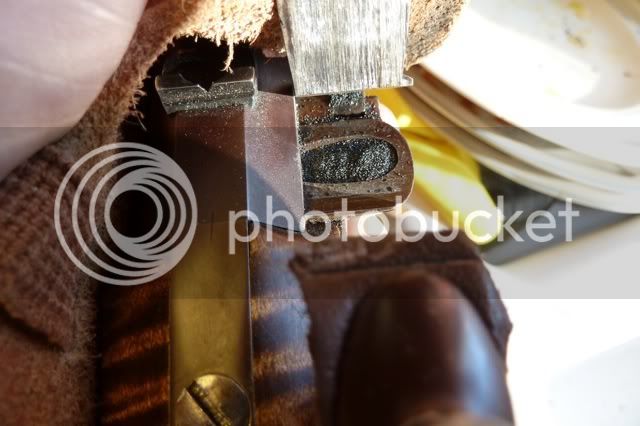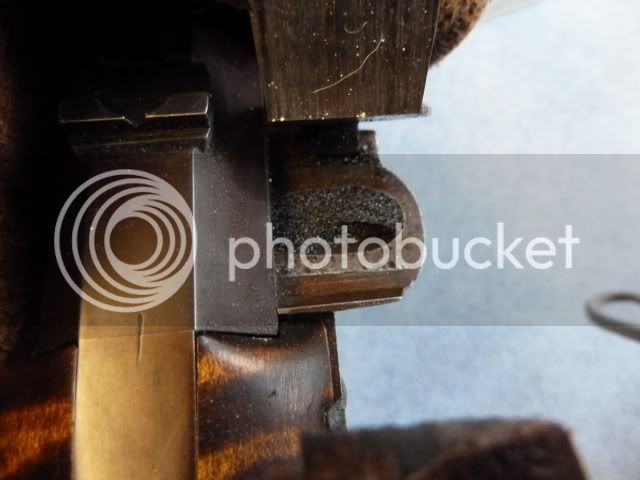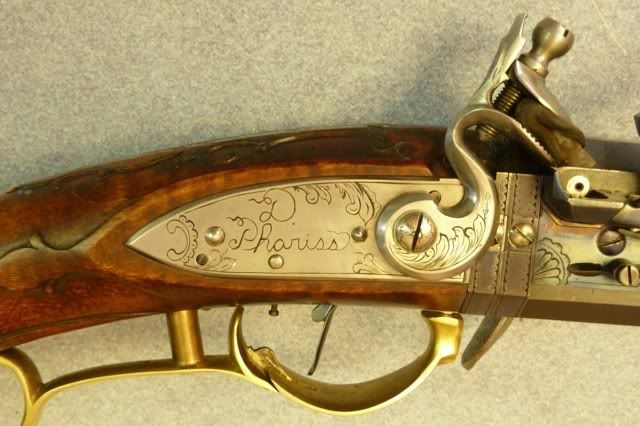Most of the time the amount does not matter much, ideal situations, etc.
However.
Heat is what fires the gun. Skimp on heat and sooner or later, in the wind (ever hear to old tale of blowing the fire/prime out of the pan? it happens), in -20 weather, wrong phase of the moon etc it may bite you. If I put in near full pan of powder I know that lack of prime is not the reason for the flash. Its one less variable.
Powder in the pan tends to settle to the lowest point.
This is the same priming charge after 5 hours in a shoulder holster. (Its bear season.)
No matter where it settles to there is powder virtually anywhere in the pan that the spark falls.
I use 1/2 to 1/3 this much on the range (unless the rules call a flash in the pan a score shot) where it does not matter much. Out in the woods? It gets 3/4 full or more.
If the vent is set similar to this there is no risk of burying it if this is a worry.
I have seen rifles that I used extensively with no problems get the vent bored out by a subsequent owner because he believed the "use just enough powder to coat the bottom the pan" BS.
They made those pans this large in originals for a reason. If a thin coating was all that was ever needed the would have made smaller pans.
The easiest way to resolve this is to ask:
"If your life depended on this thing firing how much prime would you want in the pan?"
Dan










